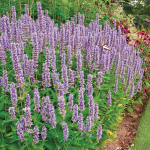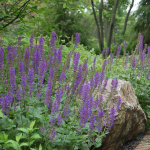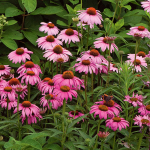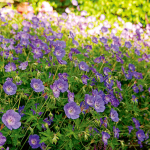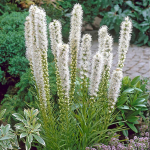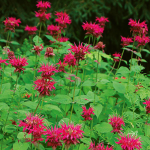Product Details
Although Hemerocallis 'Hyperion' has been around since 1925, the plant remains unsurpassed in its color class. It's one of the great performers. Canary-yellow flowers are carried in profusion above vigorous clumps of grasslike foliage. The flowers, which retain a light, sweet fragrance lost in most modern hybrids, show mid-July through August at our nursery.
Daylilies (Hemerocallis) are the plants every gardener dreams of. They offer glorious flowers in every shade except blue, a long season of bloom (though individual flowers last but a day), and a robust disposition that makes them easy to transplant, easy to maintain, quick to multiply, and resistant to pests. They make a carefree and colorful ground cover.
We ship plants that usually bloom the first year. They will outperform lesser grades offered elsewhere. Except as noted, all are dormant varieties, which means their leaves are deciduous.
For more information on growing Hemerocallis, click Growing Guide.
Shipping
HOW PLANTS ARE SHIPPED
The size of the plants we ship has been selected to reduce the shock of transplanting. For some, this means a large, bareroot crown. Others cannot travel bareroot or transplant best if grown in containers. We ship these perennials and annuals in 1 pint pots, except as noted. We must point out that many perennials will not bloom the first year after planting, but will the following year, amply rewarding your patience. We ship bulbs as dormant, bare bulbs, sometimes with some wood shavings or moss. Shrubs, Roses, vines, and other woody plants may be shipped bareroot or in pots. The size of the pot is noted in the quick facts for each item.
WHEN WE SHIP
We ship our bulbs and plants at the right time for planting in your area, except as noted, with orders dispatched on a first-come, first-served basis by climate zone. We also ship a wide range of containers and planters, tools, supplies, fertilizers, garden wear, garden decor items, as well as indoor decorations like wreaths and dried bouquets when available. Estimated dates for shipping are indicated in the green Shipping Details box for each item. Please supply a street address for delivery. Kindly contact us with two weeks notice, if you'll be away at the expected time of delivery.
OUR GUARANTEE
We guarantee to ship plants that are in prime condition for growing. If your order is damaged or fails to meet your expectations, we will cheerfully replace or refund it. Please contact our Customer Service Department at 1-800-503-9624 or email us at [email protected]. Please include your order number or customer number when contacting us.
Reviews
Average Customer Rating:
 (6 Reviews)
Write a Review
(6 Reviews)
Write a Review
Sort by:
A charming favorite 
A viewer from Poland Ohio
Garbage 
Doug from Sharon, CT
Great after 10+ years 
DirtDigger from Philadelphia, PA
Growing guide
Latin Name Pronunciation: hem-er-oh-kal'iss
Of exceptionally easy culture, these long-lived stalwarts of the garden come in every hue but blue. Hardy, pest-resistant, and quick to multiply, Daylilies are ideal perennials with many landscape uses: as specimen plants in the garden or massed to stabilize a slope or to act as a carefree ground cover. Dwarf forms are good container subjects. Although each flower only lasts a day, the blooms open over a long period. Early, mid-season and late varieties are available and by planting some from each group it is possible to have almost continuous bloom throughout the summer. Hybridizers continue to expand the list of reblooming varieties as well.
Planting: When planting your bareroot Daylily, dig a hole deep and wide enough to accommodate the roots. Spread out the thick roots in the hole and place the plant so the crown—where the leaves meet the roots—is 1″ below the surface of the soil. Holding the crown of the plant, push soil into the hole, working soil around the roots. Firm the soil around the crown, pressing down with both hands.
Light/Watering: Daylilies will grow in full sun in the North and will tolerate the same in the South with sufficient moisture. Plants grow well in partial shade, which is preferred for varieties with pastel flowers. Daylilies are drought-tolerant once established, but perform best with consistent moisture.
Fertilizer/Soil and pH: These perennials prefer a well-drained loam with a pH approaching neutral. Soils rich in organic matter encourage profuse blooming, although many of the older hybrids will grow well even in a sandy situation. Fertilize lightly once the plants are established, but avoid using mixes high in nitrogen. A summer mulch is appreciated, since it will help soils retain moisture and buffer soil temperatures.
Pests/Diseases: Daylilies rank high on the list of plants resistant to insects and diseases. Thrips occasionally feed on buds or flowers, distorting the blooms and causing cork-like lesions on the flower spikes, which may then break at the affected area. Use insecticidal soap to discourage these tiny pests, and remove and destroy any infested buds or flowers. Spider mites can infest the foliage during hot, dry weather; wash them off with a forceful water spray regularly, or use an appropriate insecticide. Yellowing leaves and brown leaf tips result from normal senescence after flowering; regular grooming will keep plants looking fresh. If foliage becomes unsightly, cut it back to the ground, water well, and in time new foliage will appear.
Companions: Platycodon, Rudbeckia, Liatris, Shasta Daisy, and Echinacea are all fine companions for sunny situations; Ferns, Hosta, and Solomon's Seal are lovely with Daylilies growing in shadier spots. If you underplant Daylilies with Daffodils, the foliage of the former will hide the foliage of the latter as it dies back, and you'll get two gorgeous seasons of bloom from one area with very little maintenance.
Reflowering: Many reblooming varieties are now available; these require regular removal of old flowers to perform at their best. On all types of Daylilies, spent flowers should be snapped off daily and the entire flower scape should be cut off after all buds have passed.
Dividing/Transplanting: Daylilies should be divided every 3 to 5 years, and repeat-bloomers every two years since new growth supports the rebloom. Two spading forks held back-to-back and prised apart makes this chore easy. Transplant anytime the soil is workable, watering well after planting in the new location.
End of Season Care: Simply remove old foliage by cutting back to the ground or pulling off. Daylilies are very cold hardy, with the exception of some evergreen varieties, so a winter mulch is little more than a nicety.
Calendar of Care
Early Spring: Apply a light application of balanced or slow-release fertilizer low in nitrogen or side-dress with compost and organic amendments when new growth appears. Divide or transplant as necessary, watering well afterward.
Mid-Spring: Water well if it is unseasonably dry, as plants prefer evenly moist soil.
Late Spring: Remove spent flowers daily. Watch for flower thrips and treat accordingly.
Summer: Continue to deadhead as needed, and cut away flower scapes after all buds have opened. Groom plants by removing yellow or dead leaves. Supplement natural rainfall to provide an inch of water a week, and apply 2–3 inches of mulch around plants, keeping it an inch or so away from the crowns. Monitor plants for spider mites and spray if needed.
Fall: Remove old foliage by cutting back to the ground.

